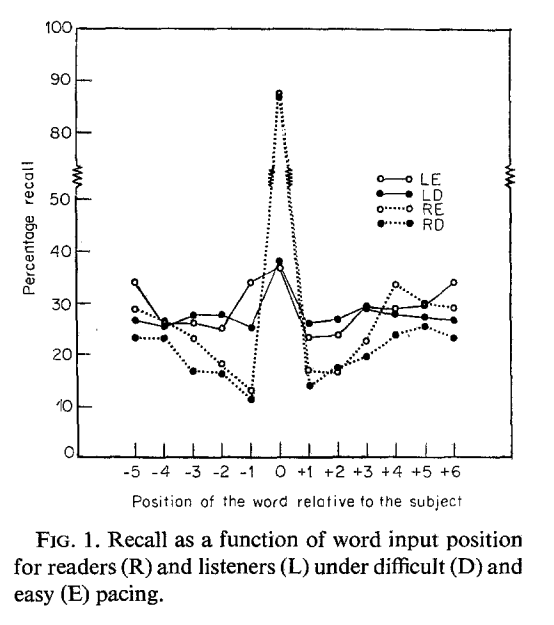
As the queue gets shorter, you look around, feeling the anticipation and anxiety of being next.
Bit by bit, you inch closer to your turn, with the people in front of you falling away in view.
Then, as you walk tensely up to take your turn to perform, you’re asked a couple of questions about what was said by the person preceding you.
Although it was just a few minutes ago, you stand there, cold and still, completely blank in thought, having forgotten what was meant to be said.
What is the Next-in-Line Effect?
This phenomenon of being unable to recall information that preceded you, just as you’re about to perform is what is known as the next-in-line effect.
When people are in line, expected to perform in some sort of way — whether that be dance, sing, or simply speak — they tend to ignore the cues that are around them. This act of being next in line has shown to have quite a strong, influential effect on our attention, and in turn our short-term memory.

Where it comes from
The next-in-line effect was first studied by British clinical scientist Dr. Malcolm Brenner back in 1973. In his study, he got a group of subjects to sit in a square and one by one, expose and read aloud a word card to the rest of the group that listened in.

Brenner examined their recall abilities as both performers (those who went up and spoke aloud) and the audience. Also, to mitigate any bias in regards to the serial position effect, the first and last two words were not analyzed.
Why it happens
Brenner discovered that most subjects tended not to recall words that were mentioned 9 seconds before and after a given performance (roughly 3 positions). The results created what is known as a scallop effect.
This is a concept in behaviorism, where a response pattern starts slowly but increases in speed, creating a shape in the data that resembles a scallop (hence the name).

Studies like this demonstrate that the requirement to perform strongly influenced a subject’s ability to recall any given information.
Attention and its limited capacity may be one explanation as to why the next-in-line effect occurs. In Daniel Kahneman’s book Attention and Effort, he proposes that our attention is limited in resources. This theory known as the capacity framework model of attention states that we can only pay attention to so many things in any given environment or time. This may be to help prevent cognitive overload and perform familiar tasks accordingly.

Another explanation for the next-in-line phenomenon can be seen in an error in the encoding process right before a performance. This encoding deficit can come from a lack of attention as mentioned earlier or is also derived from social anxiety.
A study by social psychologist Charles F. Bond Jr. PhD found that people who reported having higher levels of social anxiety were more likely to experience the next-in-line effect. Just as attention may disrupt the encoding process, pre-performance anxiety can impair what we remember.
How to prevent it
If the next-in-line effect is ultimately a matter of attention, the closest way to help prevent this phenomenon from occurring is to consciously direct our attention to the pre-performance tasks.
To help with this, warnings prior to the performance itself can help to bring the person’s attention back to the given task.
These warnings can help a person utilize their limited attentional resources for the task at hand, instead of having them deal with the anticipatory thoughts of going up next.
Like with many cognitive biases, we need to start with acknowledging that these things happen to us. As we become conscious, the next step is to be able to be cognitively aware. This is the best way to start overcoming our cognitive biases and learning to take control of our minds and behaviour.










